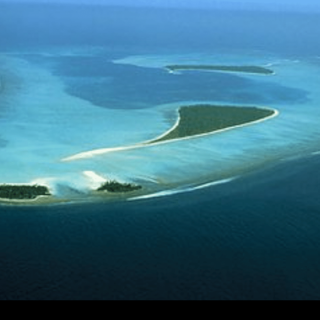Researchers have discovered the world’s largest geoglyph — a form of artwork carved on the ground or rocks — in the Indian subcontinent, in the arid region of the Thar Desert.
Geoglyphs are patterns largely made of durable material found in nature, such as stones, stone fragments, gravel, or soil; they consist of designs longer than 4 meters generally — more than the combined height of two people on average. The series of geoglyphs found in the Thar Desert, however, covers an area of about 1,00,000 square meters. The huge spiral artwork is believed to be at least 150 years old, and surpasses every geoglyph ever found in terms of length.
Like most other geoglyphs whose patterns are appreciated and surveyed only from a height due to their enormity, this one, too, was studied using a drone. According to a paper published this week in Archaeological Research in Asia, independent researchers discovered the patterns using Google Earth’s satellite technology, and then used an unmanned aerial vehicle to confirm their existence.
“So far, these geoglyphs, the largest discovered worldwide and for the first time in the Indian subcontinent, are also unique as regards their enigmatic signs,” the study notes. In the Thar Desert, the researchers found not one, but many inter-connected geometrical patterns across the desert. Out of these, two engravings stood out to them the most — a giant spiral and a serpent.
There are several geoglyphs spread across the world — in the U.S., the U.K., Kazakhstan, Saudi Arabia, and now, India. Until recently, the largest geoglyph in the world was in Australia — called the “Marree Man,” it is 4,200 meters long, and depicts a human being holding either a stick or a boomerang. But the most famous of all geoglyphs is called the “Nazca Lines.” Located in Peru, which is home to other geoglyphs too, the Nazca Lines consist of several figurative designs of flora and fauna — archaeologists continue to discern and identify new designs to this day.
Related on The Swaddle:
Cavemen Were Probably Hallucinating When They Painted on Walls, Research Says
However, unlike the Nazca Lines that were created between 500 B.C. to 500 A.D., the geoglyphs in the Thar Desert are estimated to be only about one-and-a-half-century old.
The discovery raises many questions. Who made them? What do they represent? The researchers don’t have the answers yet, but have hypothesized some theories. Given the sheer scale of the art, and the fact that the region is primarily flat, researchers believe these geoglyphs could be the result of a yet-unknown cultural practice than a creative, artistic impression. The latter, however, would be an accomplishment difficult to achieve — the artist(s) would have to be at a fair distance off the ground to truly make sense of what they were carving.
The father-son duo, the independent researchers credited for the discovery, believes the designs could have “religious, astronomical, and/or cosmological meanings,” perhaps, related to some Hindu memorial stones found in the area.
The possibilities are endless. “Because of their uniqueness, we can speculate that they could represent a commemoration of an exceptional celestial event observed locally,” they noted in the paper. “We remain convinced that these unique geoglyphs are closely connected to their geographical and cultural context, and possibly contain a universal message linked to the Sacred and the cosmos [sic].”
The geoglyphs remain shrouded in mystery for the time being — but as ScienceAlert notes, “Whatever they are, they look to be pretty special.”




